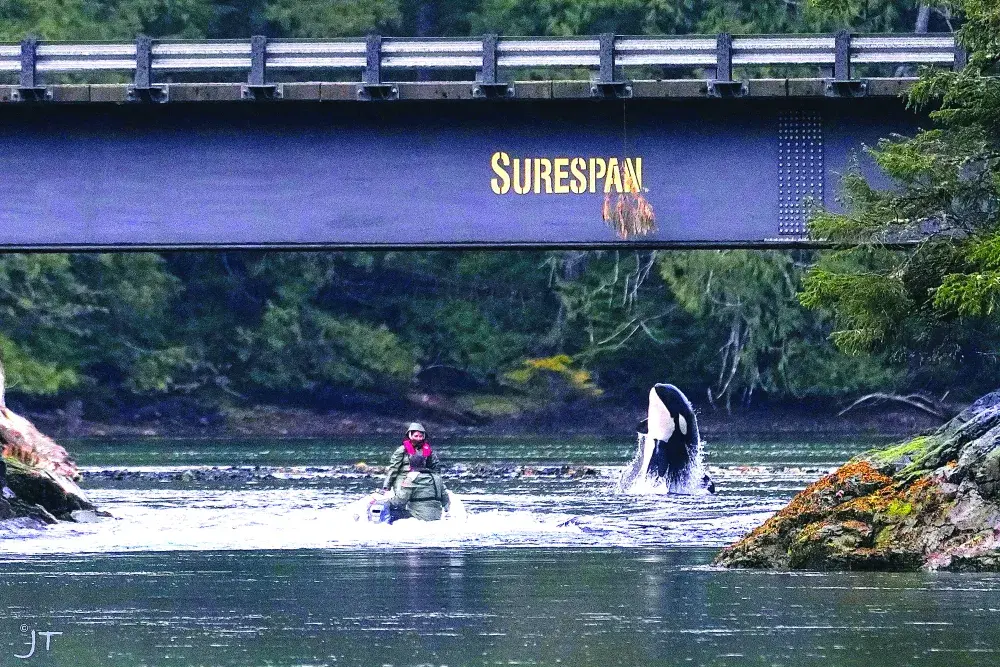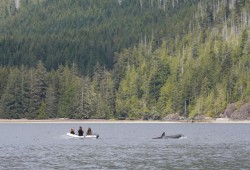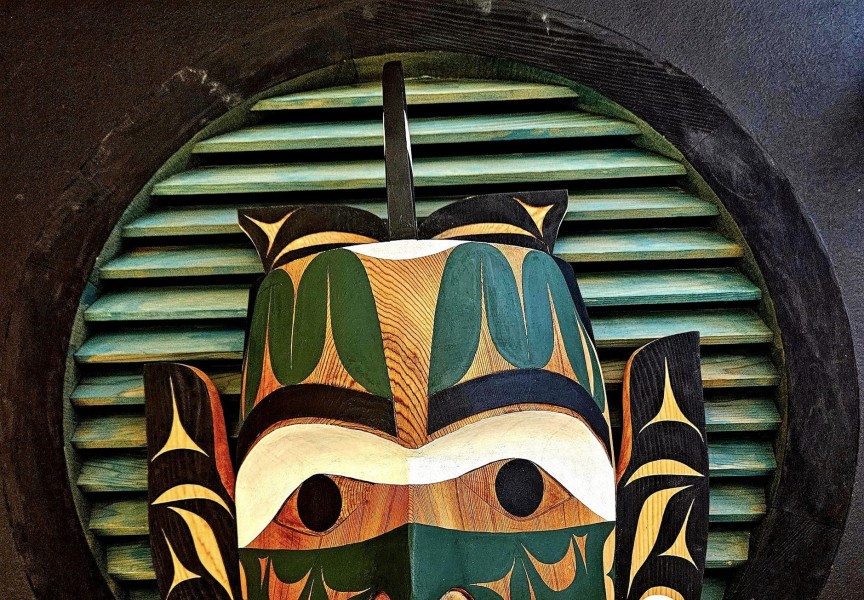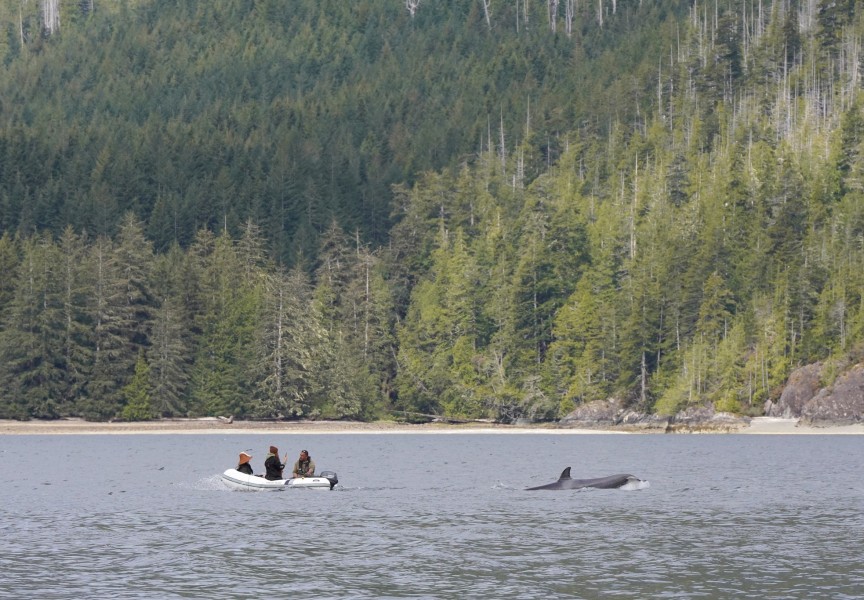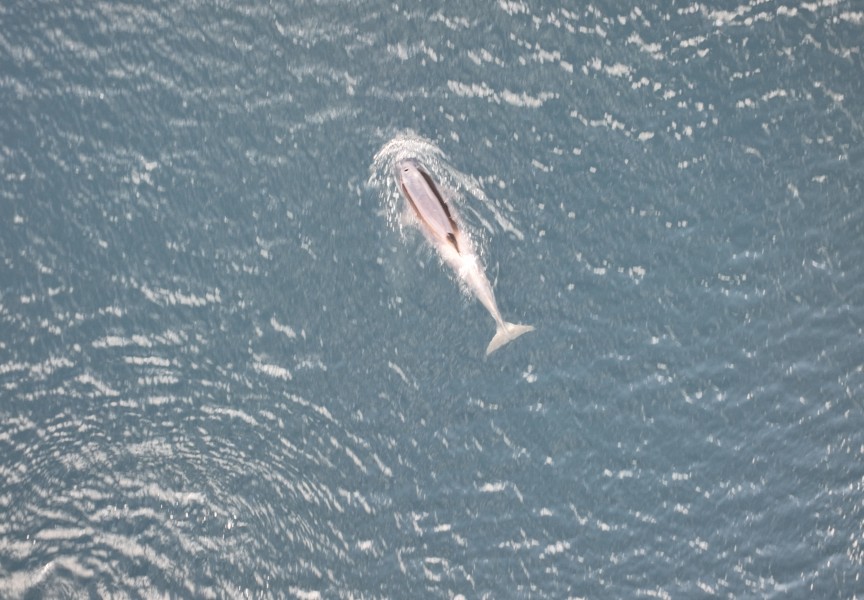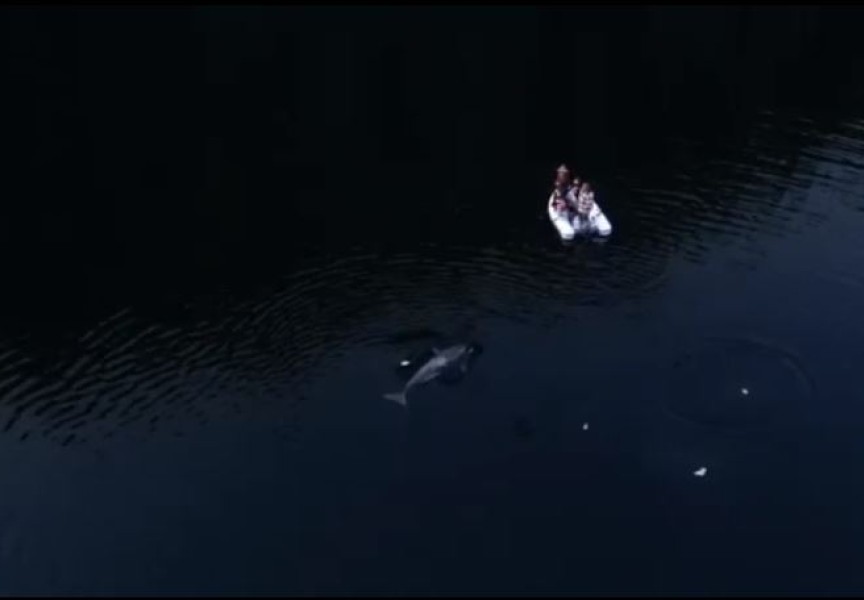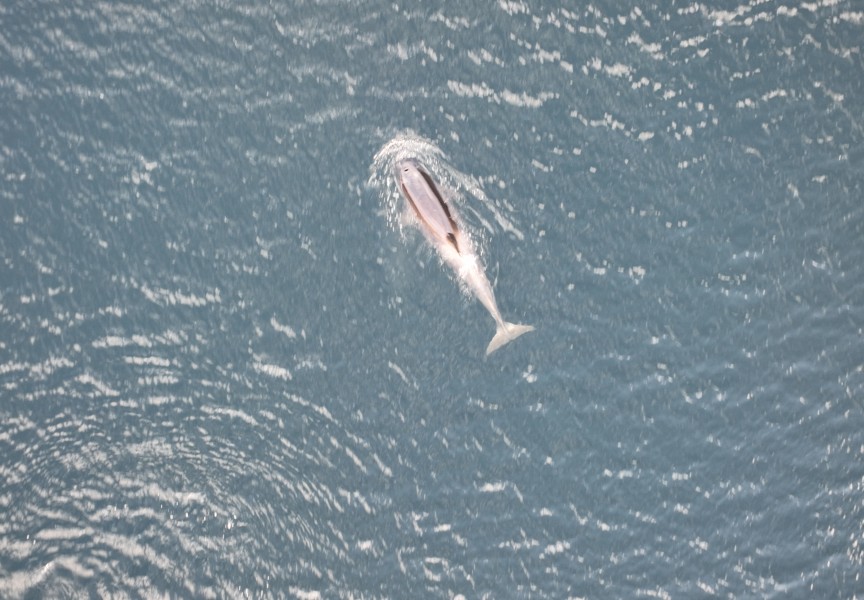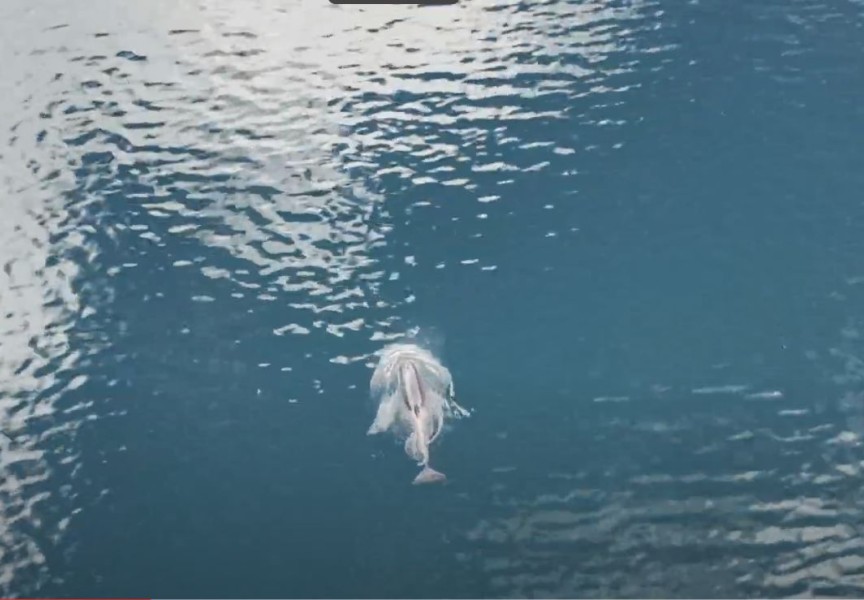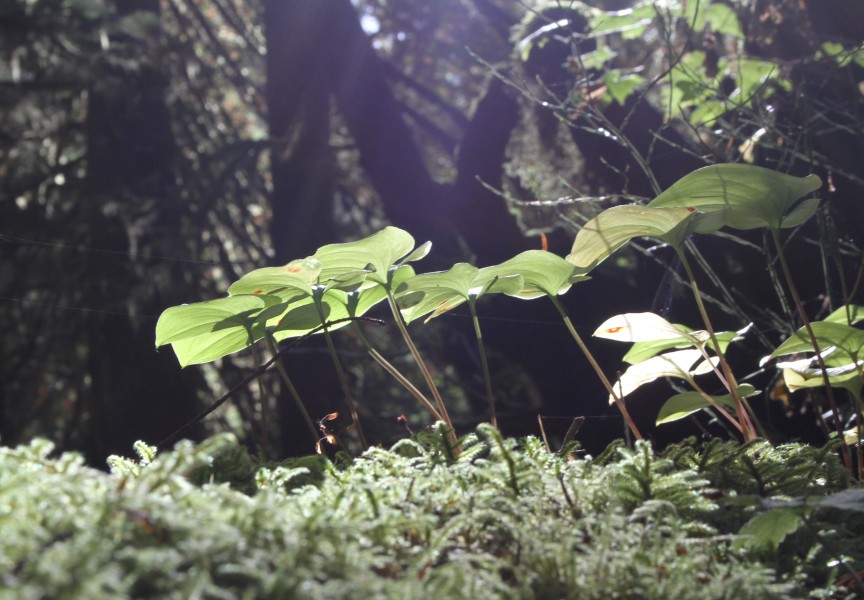It has been more than a month since the last confirmed sighting of the orphaned orca kʷisaḥiʔiis (Brave Little Hunter), but hope remains strong that the two-year-old Bigg’s killer whale is heading toward her family pod.
It was on March 23 when catastrophe struck for the young killer whale. That was the day kʷiisaḥiʔis and her mother, known as Spong, entered a shallow lagoon near Zeballos, likely hunting seals. Spong stranded in the shallow waters and drowned when the tide rose.
Kʷiisaḥiʔis remained in the lagoon for about a month after her mother died. She appeared to be losing weight but was observed eating birds during her time in the lagoon. She was fed seal meat from a distance shortly before she found her way out of the lagoon on April 26.
The orphaned orca was seen heading through the inlet toward the open ocean and hopes are high that she will reunite with a family pod.
The last confirmed sighting of kʷiisaḥiʔis was about a week after she left the lagoon, on May 2, with another possible sighting about May 10.
According to orca experts, kʷiisaḥiʔiis belongs to the T109A family pod of transient orcas and her family is big. She is a descendant of a 47-year-old matriarch that still swims the oceans of Vancouver Island with her relatives. Kʷiisaḥiʔis is the great granddaughter of T109, also known as Noyes or Big Mama, who was born in 1977.
Big Mama’s daughter, born in 1990, is T109A (the letter A indicates she is the first live calf born to Big Mama). She is also known as Frio or Runaway.
In 2009 Frio gave birth to Spong, or T109A3. The numeral 3 indicates Spong is the third live calf born to this female. Spong had at least six other half siblings from her mother, Frio.
Spong’s first calf did not survive and doesn’t appear to have been given an identification code, but in 2022 she had a successful birth when kʷiisaḥiʔis (T109A3A) was born.
Sadly, it was Spong that died on March 23, 2024 when she became stranded in a shallow lagoon near the Zeballos causeway. A necropsy showed that Spong was still nursing her daughter and was pregnant with another female when she drowned.
But kʷiisaḥiʔis, at age two, had already been taught some survival skills by her mother. Despite nearly a month of apparent mourning in the shallow lagoon where her mother died, the young orca was seen eating a bird and took feedings of seal meat. She left the lagoon on her own after a month.
As the young orca made her way toward the ocean, a T109 pod was spotted near Alert Bay, north of kʷiisaḥiʔis location.
“It’s big for its age, has a loud, strong voice and is proving adaptive and incredibly resilient,” wrote Jared Towers, a marine scientist and executive director of Bay Cetology, on social media.
He was the one who shared the news that T109 was spotted near Alert Bay on May 20. This pod is led by Big Mama (T109A), the orphaned orca’s great grandmother.
On June 4, an organization called Strong Coast posted on social media that the T109A pod was spotted in Alaskan waters.
Kʷiisaḥiʔis hasn’t been seen for more than a month, but, according to Towers, there is no reason for alarm.
In a May 20th post from Alert Bay, Towers wrote, “I had a nice surprise this morning as the T109s swam out of Pearse Pass and 100 metres past my doorstep. This is Kʷiisaḥiʔis’s great grandmother’s pod and although she wasn’t with them, the good news is she hasn’t been seen since May 10th (as far as I’m aware), which means she is probably on the move.”
Towers went on to say that it is known from previous cases that lost or orphaned killer whale calves can re-integrate into the population and go on to live healthy normal lives, but finding a group willing and able to make an adoption can take time and is not guaranteed.
“What is for sure is that we gave this Brave Little Hunter the best chances possible and now all we can do is take identification photos to see where, when, with whom, and if she shows up,” Towers wrote.

